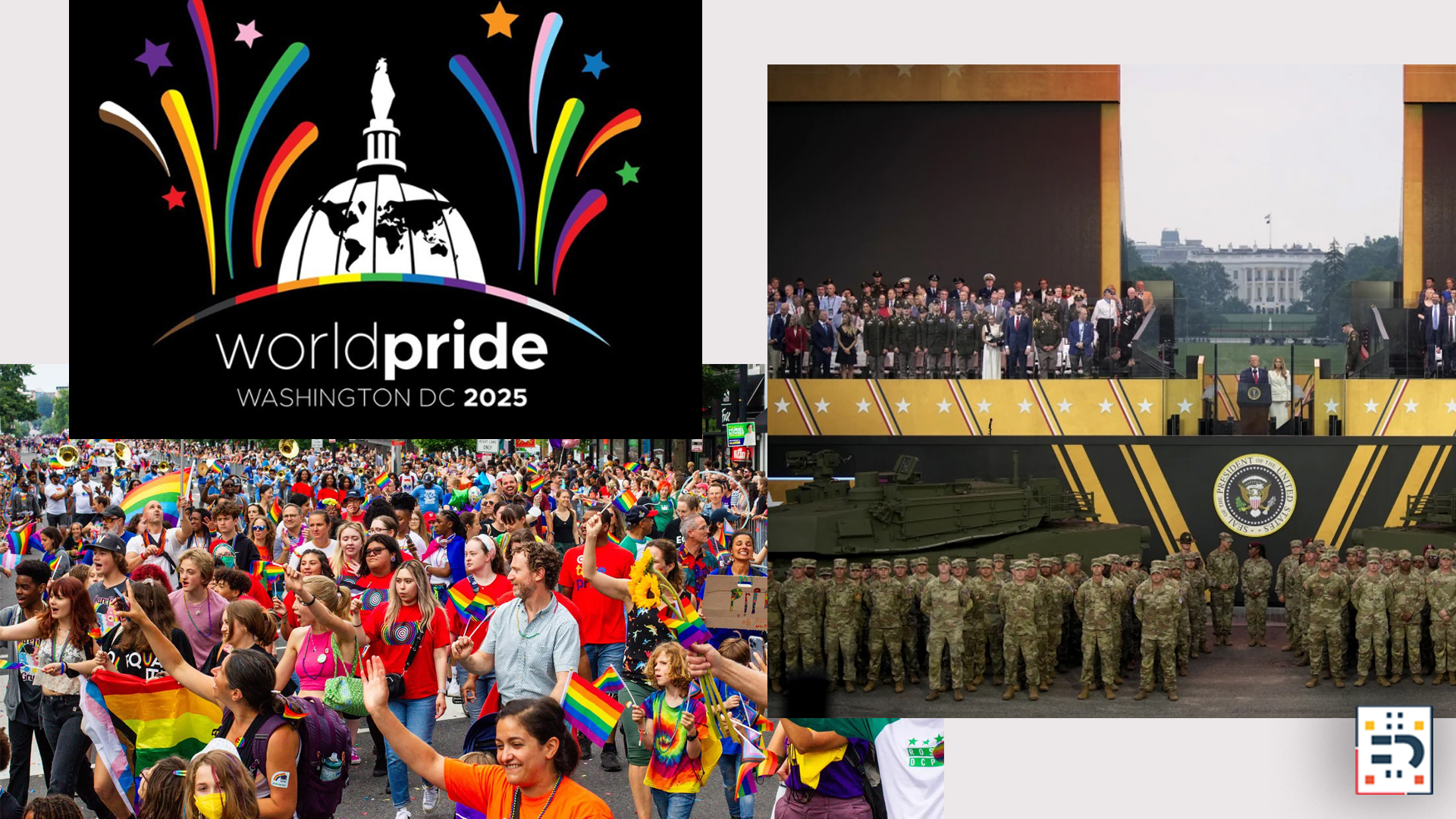In June 2025, Washington, D.C.—the symbolic and political heart of the United States—hosted two parades within days of each other that offered sharply contrasting visions of America: one a radiant celebration of LGBTQ+ freedom and inclusion, the other a show of military might orchestrated by former President Donald Trump.
These parades weren’t just events. They were performances of ideology, memory, and identity—set against the same streets but moving in different directions.
WorldPride: A Celebration of Inclusion and Resistance
From May 17 to June 8, D.C. played host to WorldPride 2025, a sprawling, joyous affirmation of LGBTQ+ history and identity. Unlike traditional Pride parades, WorldPride wove together multiple celebrations—Black Pride, Trans Pride, Latinx Pride, Military Pride—into a living archive of intersectional struggle and survival.
At Freedom Plaza, exhibits honored queer icons, wartime service of LGBTQ soldiers, and D.C.’s legacy as a safe haven and protest ground. The atmosphere was exuberant but also political, with speakers and signs denouncing recent rollbacks on LGBTQ+ protections at the federal level.
“We celebrate because we’re still here,” one marcher shouted. “But we march because we’re still fighting.”
The message was clear: Pride isn’t just about visibility. It’s about claiming space in a country still conflicted about whose identity gets celebrated and whose gets legislated.
The Military Parade: Power, Spectacle, and Protest
Just a week later, on June 14, the city shifted tone entirely.
D.C. marked the 250th anniversary of the U.S. Army with a full-scale military parade featuring tanks, drones, and armored personnel carriers. Thousands lined Constitution Avenue to witness the show of force, which included a public swearing-in ceremony for new recruits and a speech by Donald Trump—now a central figure in Republican electoral strategy and the symbolic leader of a resurgent conservative base.
For supporters, it was a patriotic spectacle. For critics, it was deeply unsettling.
A group of protestors, many waving signs reading “NO KINGS” and “POWER TO THE PEOPLE,” staged a sit-in at the National Archives, calling the event “authoritarian cosplay” and accusing the former president of using the military for political theater.
“This isn’t about honoring soldiers,” one protestor said. “It’s about projecting dominance. There’s a difference.”
Identity on Display: What These Parades Say About America
The proximity of these two parades—Pride and Power—poses an uncomfortable question: What does America want to be seen as?
- Pride foregrounded personal freedom, pluralism, and the importance of representation.
- The Military Parade emphasized discipline, hierarchy, and strength through unity.
One marched with rainbow flags and drag performers; the other rolled in with tanks and salutes. One sought to remember Stonewall and the AIDS crisis; the other saluted past wars and military doctrine. Both asked Americans to remember. But what we remember—and how—defines who we are.
In a city where power is always on display, these parades weren’t just about celebration—they were arguments about the soul of the nation.
Are we a country that leads with compassion or control? Inclusion or tradition? Protest or parade?
Washington, D.C., in June 2025, answered: We are all of it, all at once. And that contradiction is exactly where the national identity crisis lives.


